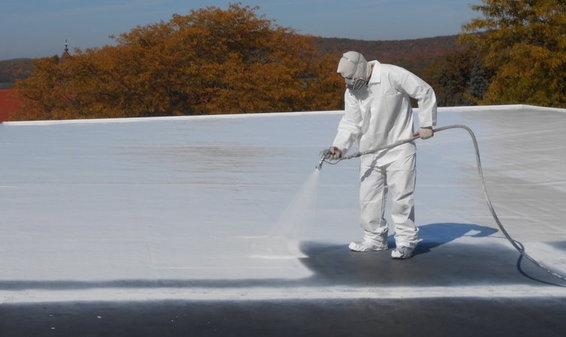It’s hard to enjoy the great outdoors without decent protection from the elements. After all, who would go out into nature just for their gear to end up getting soaking wet? Luckily, there’s an easy fix. Use waterproofing spray. Let’s find out what it is and how it works.
How Does Waterproofing Spray-Work Its Magic?
In simple terms, a waterproofing spray helps secure a porous material, such as cotton and leather, from water. By filling the pores with hydrophobic ingredients, like silicon or wax, waterproofing sprays prevent water from leaking through. To the point of completely repelling it from the material.
Waterproofing sprays are mainly used for reinforcing outdoor footwear, clothing, and gear items, such as tents and backpacks. They are also helpful in protecting the surface of car seats, cushions and pads, and other furniture pieces. In essence, waterproof sprays are well-suited for any type of porous fabric.
It’s more than just water, though, that waterproofing sprays help ward off.
More Reasons to Use a Waterproofing Spray
Besides fending off water particles, a waterproofing spray:
- Shields from bad weather Applying a waterproofing spray on the surface of an item adds an extra layer of protection for roof leak repair. This comes in handy in poor weather conditions. Be it a jacket or a tent, using a waterproofing spray can make them a lot more weatherproof.
- Drives off dirty stains It’s not the end of the world if your shoes or clothes end up soaking with pure water. But it’s rarely the case in the outdoors. Most of the time, it’s those muddy stains that you have to watch for. Decent waterproofing sprays repel mud just as well as they do water.
- Protects from accidental spills We’ve all spilled things by accident at some point. And we all know how frustrating it is to get rid of those stains as a result. Fabrics with a layer of waterproofing spray on them are much easier to clean if you spill something on them.
- Minimizes wear and tear Anecdotal evidence suggests that waterproof fabrics tend to be less affected by the stress of wear and tear. Thanks to this, such fabrics boast a longer life span. With the help of waterproofing sprays, you can make almost any type of fabric more solid.
As you can see, there’s a lot to gain from upgrading your outdoor toolkit with a waterproofing spray.
There are a few things you should keep in mind, though, before using one.
Key Mistakes to Avoid with Waterproofing Sprays
So that a waterproofing spray doesn’t ruin your things, make sure you:
- Avoid one-size-fits-all waterproofing sprays Each type of material calls for the use of a certain hydrophobic ingredient to become waterproof. And one same waterproofing spray can’t possibly encompass them all. Go for those that are specially designed for your material.
- Test it before applying It pays to test the spray before using it on your items. Try it on a small patch of the same material and pay close attention. If it reacts with the material in a weird way or doesn’t work, at least you won’t spoil your belongings.
- Never inhale the fumes Waterproofing sprays aren’t harmless. They contain synthetic compounds that can cause serious damage to the lungs if inhaled. Use them outdoors and take precautions to prevent yourself and others, including your pets, from inhaling their fumes.
- Don’t spray too much There’s no need for overkill when using a waterproofing spray. It will either get the job done with just a layer or two or won’t work at all. Applying dozens of layers of it won’t make any real difference but may instead simply ruin your things.
At this point, we know exactly what not to do with a waterproofing spray.
How do we put it to good use?
Tips for Making the Most of Waterproofing Sprays
To get the most out of a waterproofing spray, stick to these simple steps:
- Wash the material thoroughly to clean the pores from various dirt and oil particles.
- Give the material time to dry in a natural way.
- Spray on the material outdoors while standing at a safe distance from the fumes.
- Let the first layer dry, applying the second one if necessary.
After following these steps, you’ll be all set to go and enjoy the great outdoors. We hope our guide has given you a grasp of how waterproofing sprays work.





